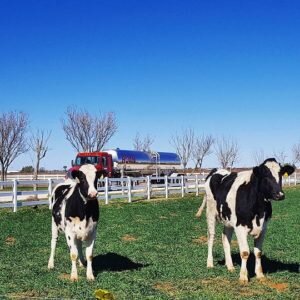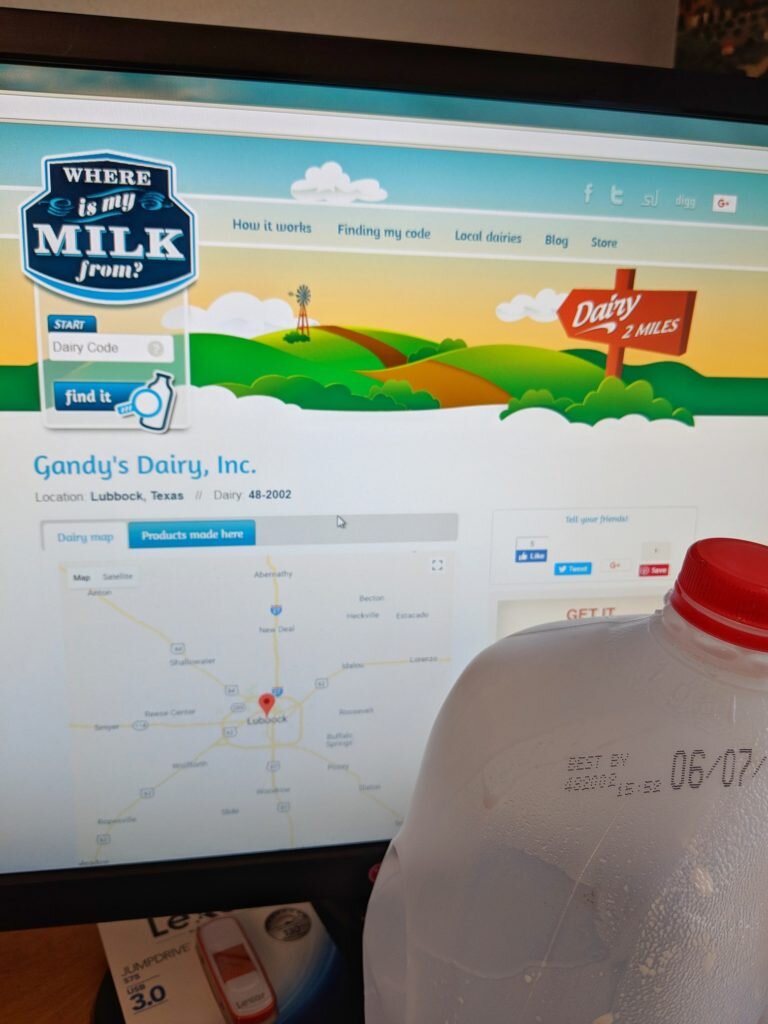The Story of Milk: Farm to Fridge
Happy June DAIRY Month! I am excited to be kicking off June Dairy Month with a series of blog posts, photos, and Instagram live videos to help tell the story of milk. From cow care to sustainability to how our milk gets to your fridge, I want to use this month to give you the inside scoop on the story of milk.
At Our Dairy Farm
Nutritious milk starts with healthy cows. We always talk about how cow care is our #1 priority on the dairy. Well, one reason is that cow care directly relates to milk production. The more comfortable a cow is in her environment and the better her diet is, the higher quality and quantity of milk she will produce. Dairy farmers consider everything from feed to bedding to the barn when taking care of their cows.So once the cow has been milked, the first step is cooling the milk to 36°F otherwise the processors will not pick it up. Next, the milk is stored in a stainless steel holding tank until the truck arrives to haul it to the bottling plant. Before the milk is loaded onto the truck, it is tested to the parts per million for antibiotics and other factors that determine the quality. If the sample comes back positive for antibiotics, we must dump all the milk, and we have to pay for it. That means that ALL milk, conventional or organic, is antibiotic free. Dairy farms are regulated by federal and state agencies including USDA and the State Department of Agriculture. Milk is one of the most regulated products on the market. We must pass stringent quality regulations in order to maintain our Grade A standard. 
At the Milk Bottling Plant
Once the milk is in the truck, it will head to a local processing plant. Most milk on the market, no matter the brand, is bottled within 100 miles of where it is produced. Since milk is a liquid, has to be kept cold and is a perishable product, it makes the most sense to keep it as local as possible. At the plant, the milk is tested again throughout the bottling process for antibiotics and other quality factors. Before bottling, the milk will be pasteurized. This is the process of heating the milk for a short period of time to kill certain bacteria. Next, the milk is homogenized to break up the cream otherwise, the cream will settle on the top. Then it is bottled and off to the grocery store.
Buying Local Milk
From the time the milk leaves our farm and arrives at your grocery store, it takes about 48 hours. And as I mentioned most milk on the shelves is locally produced by the dairy farmers closest to you. How cool is that especially if you are looking to buy local?! And if you want to double check where your milk came from, it is super easy. Head over to whereismymilkfrom.com and enter the code found on your gallon into the "Dairy Code" box. It is the number located next to the expiration date. See my photo below. My milk came from Gandy's Dairy Inc. in Lubbock, TX. That is less than 90 miles from where I live. With my purchase, I helped support dairy producers in our area. No matter what brand or what type of cow's milk you buy, you can feel great about your purchase. For $0.25 a glass, that milk provides you with nine essential nutrients and vitamins. It has one ingredient and a vitamin. And it is locally produced by the farmers in your area that make cow care their priority. If you have more questions, leave me a comment below or join me on my Instagram for live Q&As every week during June Dairy Month. And as you enjoy your glass of milk today, share it on social media using the hashtags #raiseaglass and #worldmilkday. DFA will donate $1 to the Great American Milk Drive for every post!Udderly,New Mexico Milkmaid
No matter what brand or what type of cow's milk you buy, you can feel great about your purchase. For $0.25 a glass, that milk provides you with nine essential nutrients and vitamins. It has one ingredient and a vitamin. And it is locally produced by the farmers in your area that make cow care their priority. If you have more questions, leave me a comment below or join me on my Instagram for live Q&As every week during June Dairy Month. And as you enjoy your glass of milk today, share it on social media using the hashtags #raiseaglass and #worldmilkday. DFA will donate $1 to the Great American Milk Drive for every post!Udderly,New Mexico Milkmaid